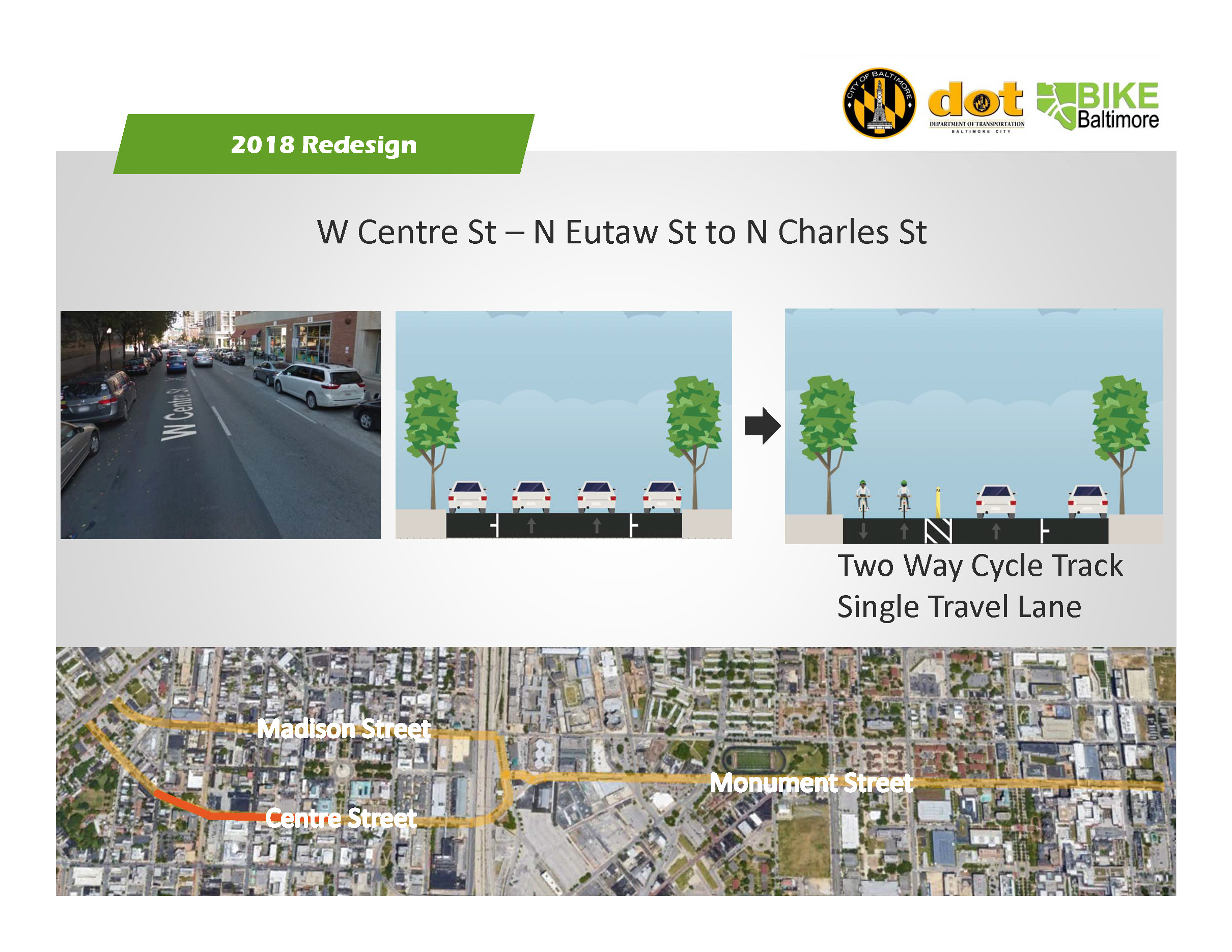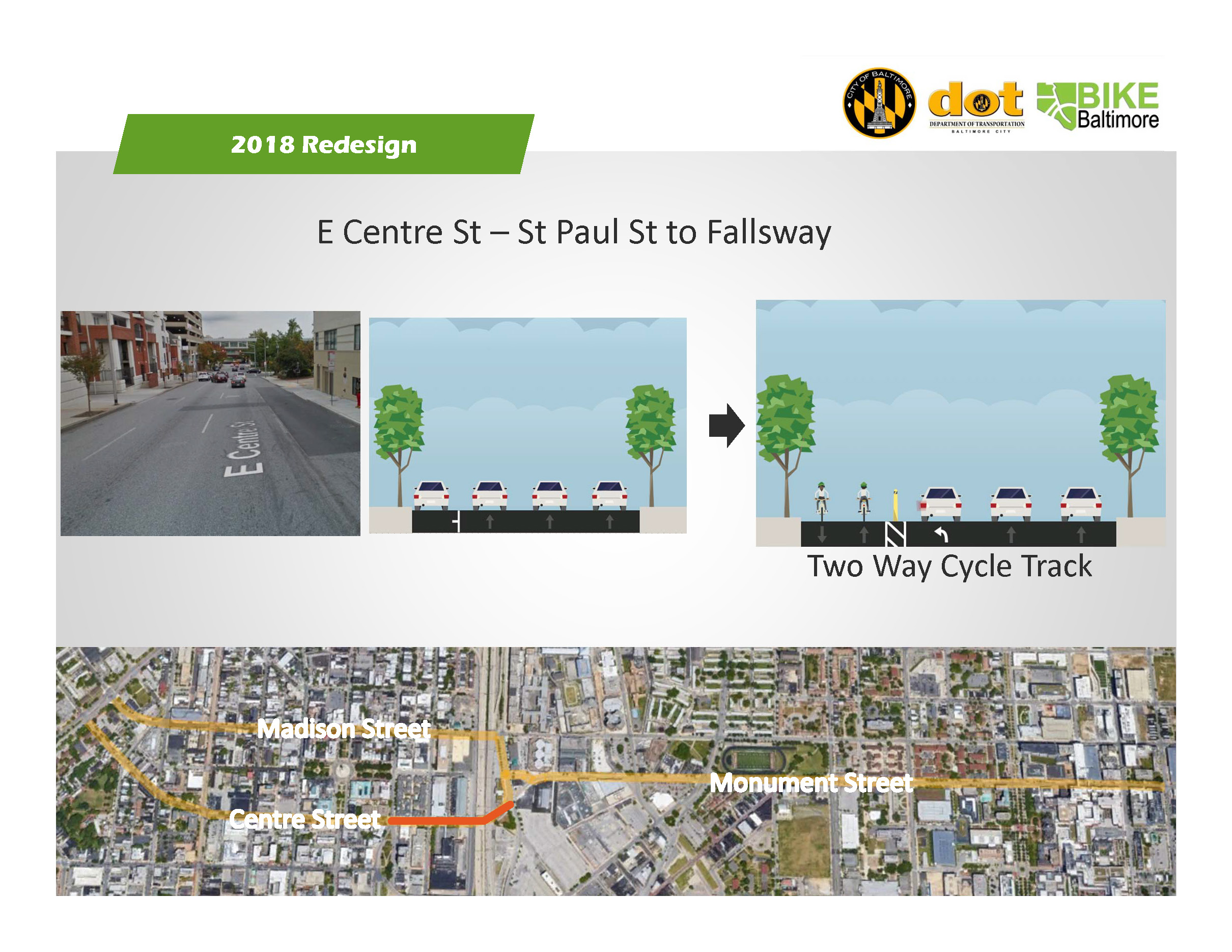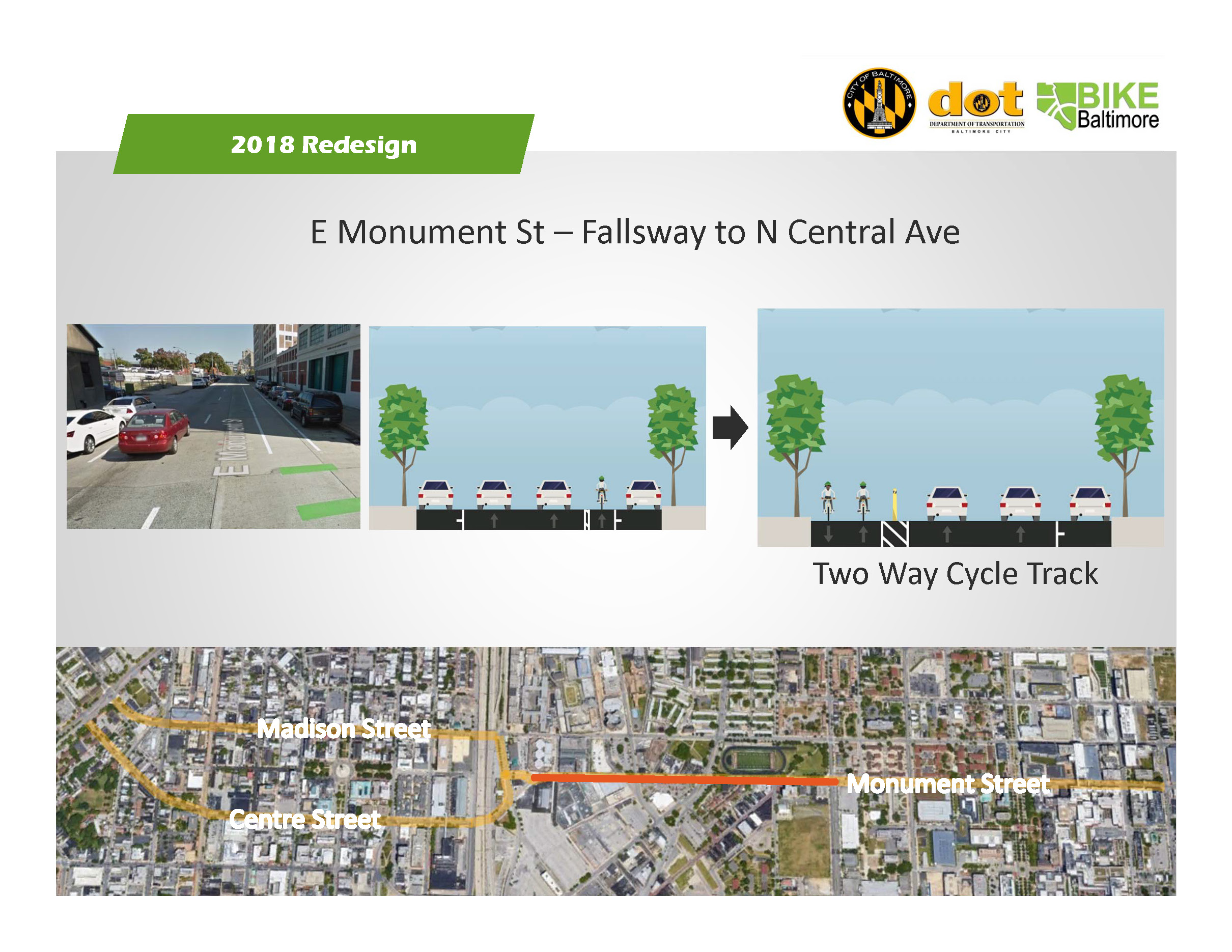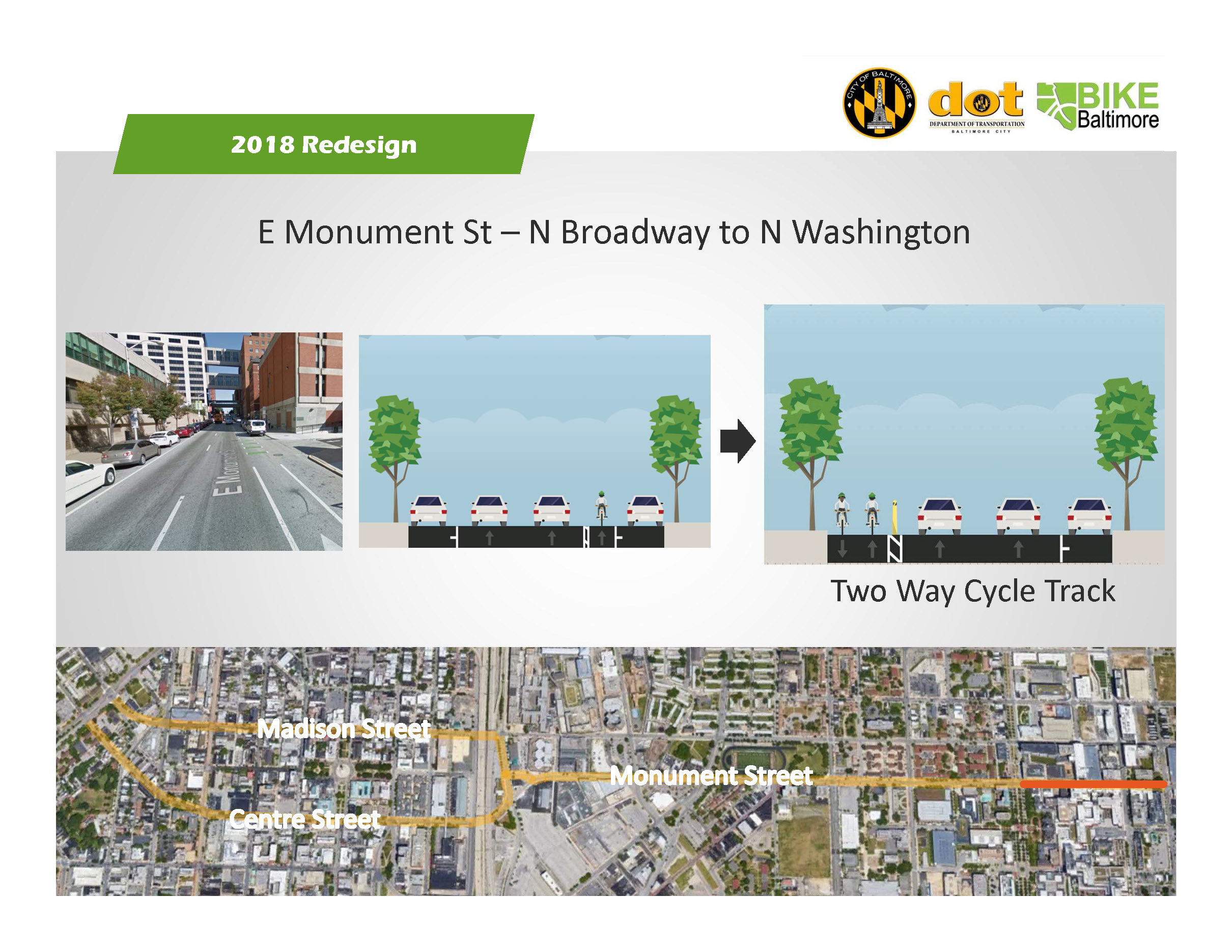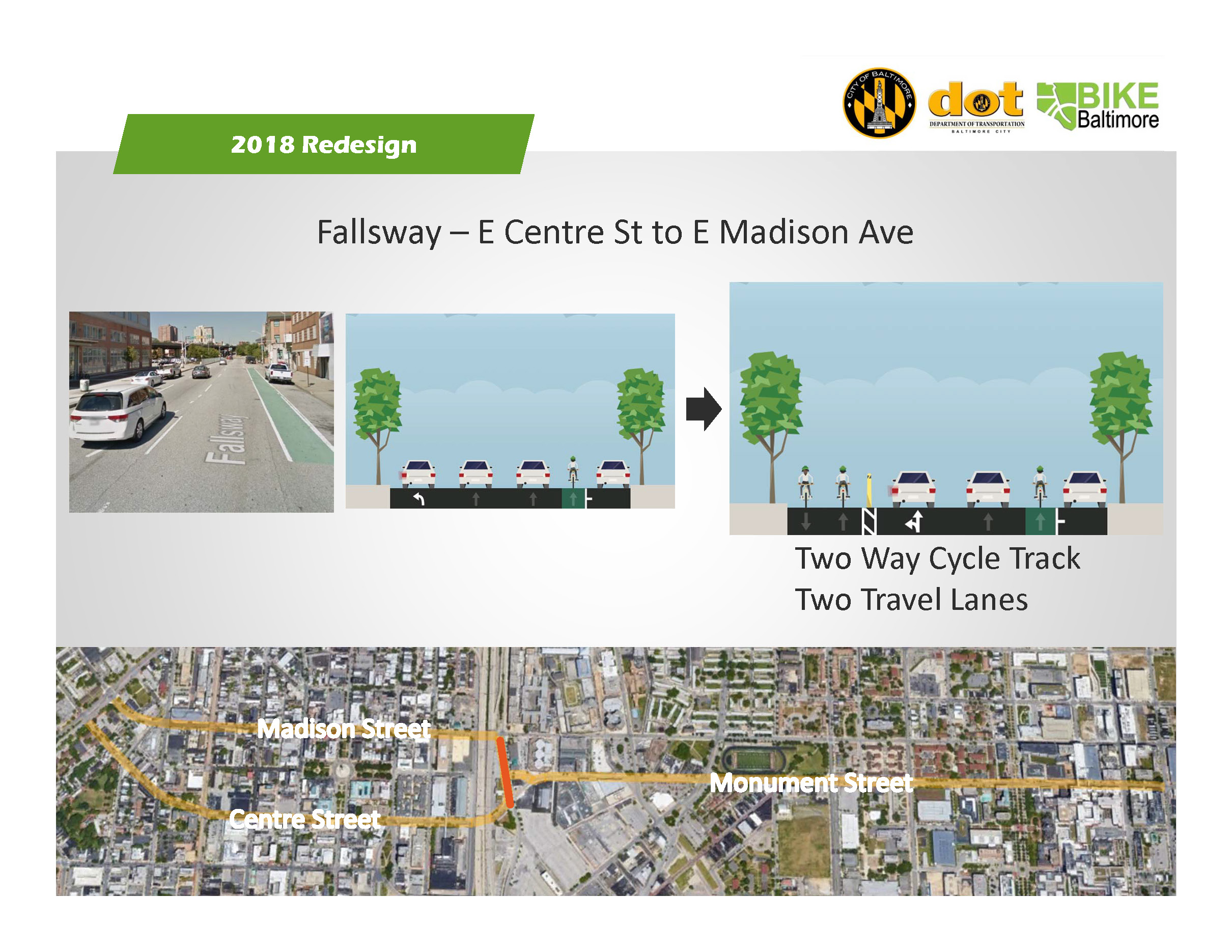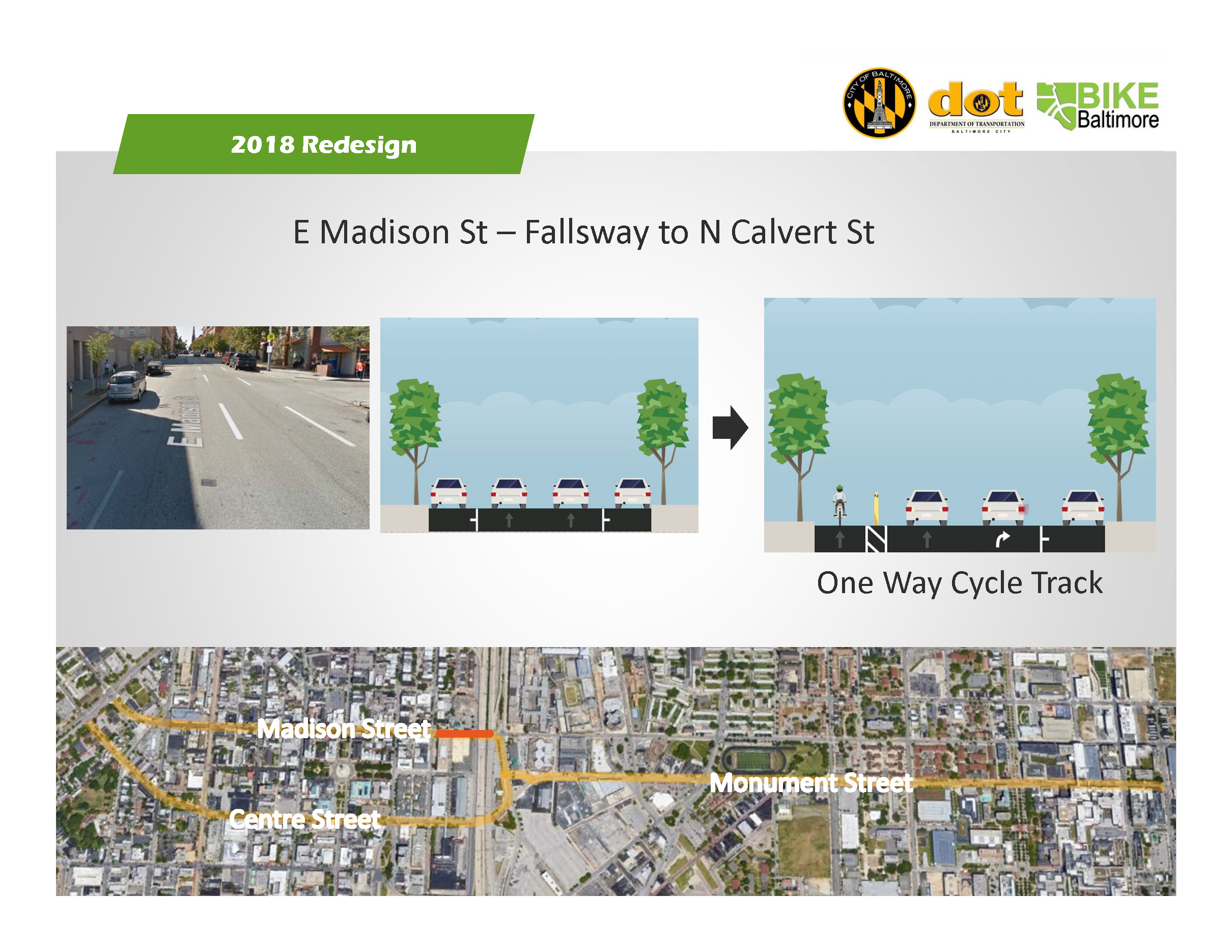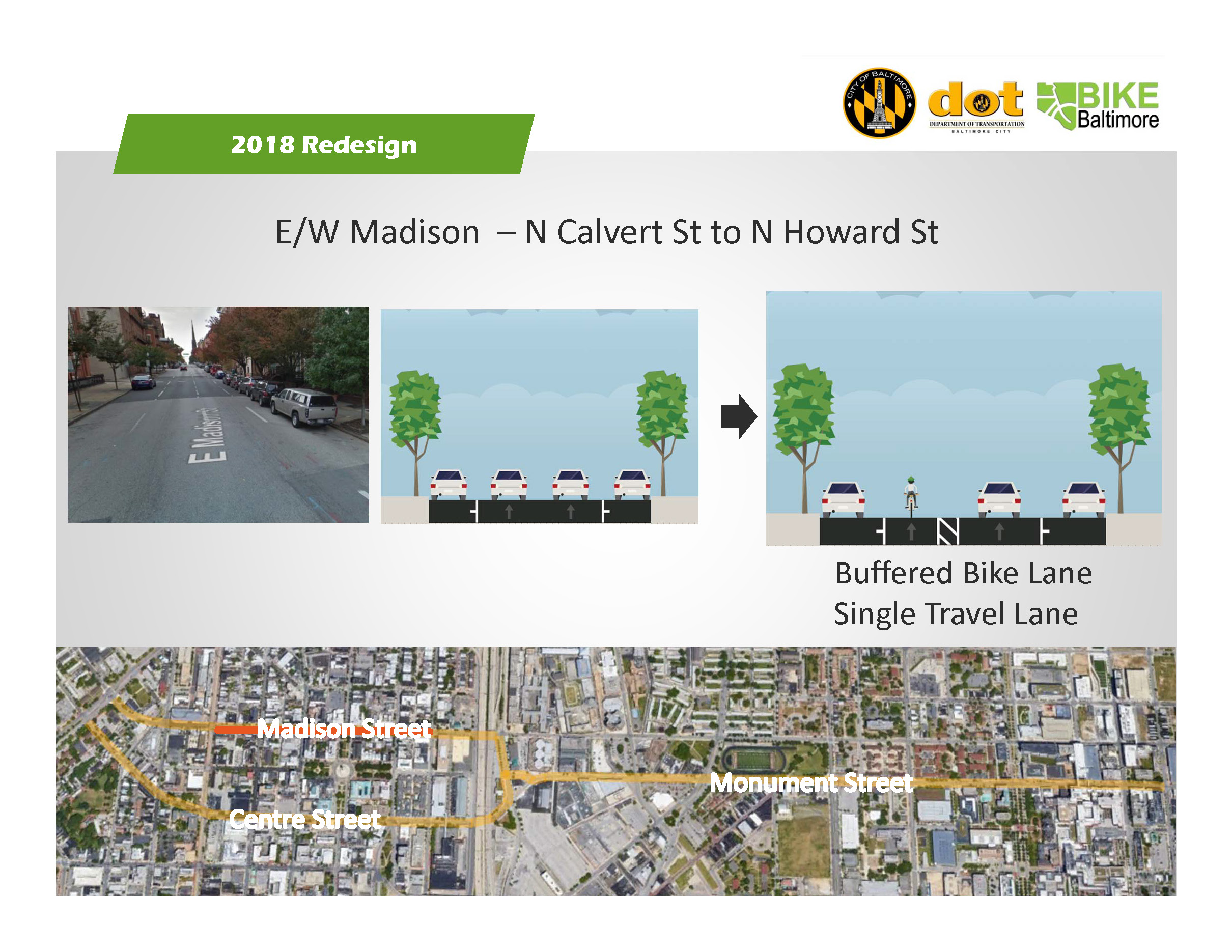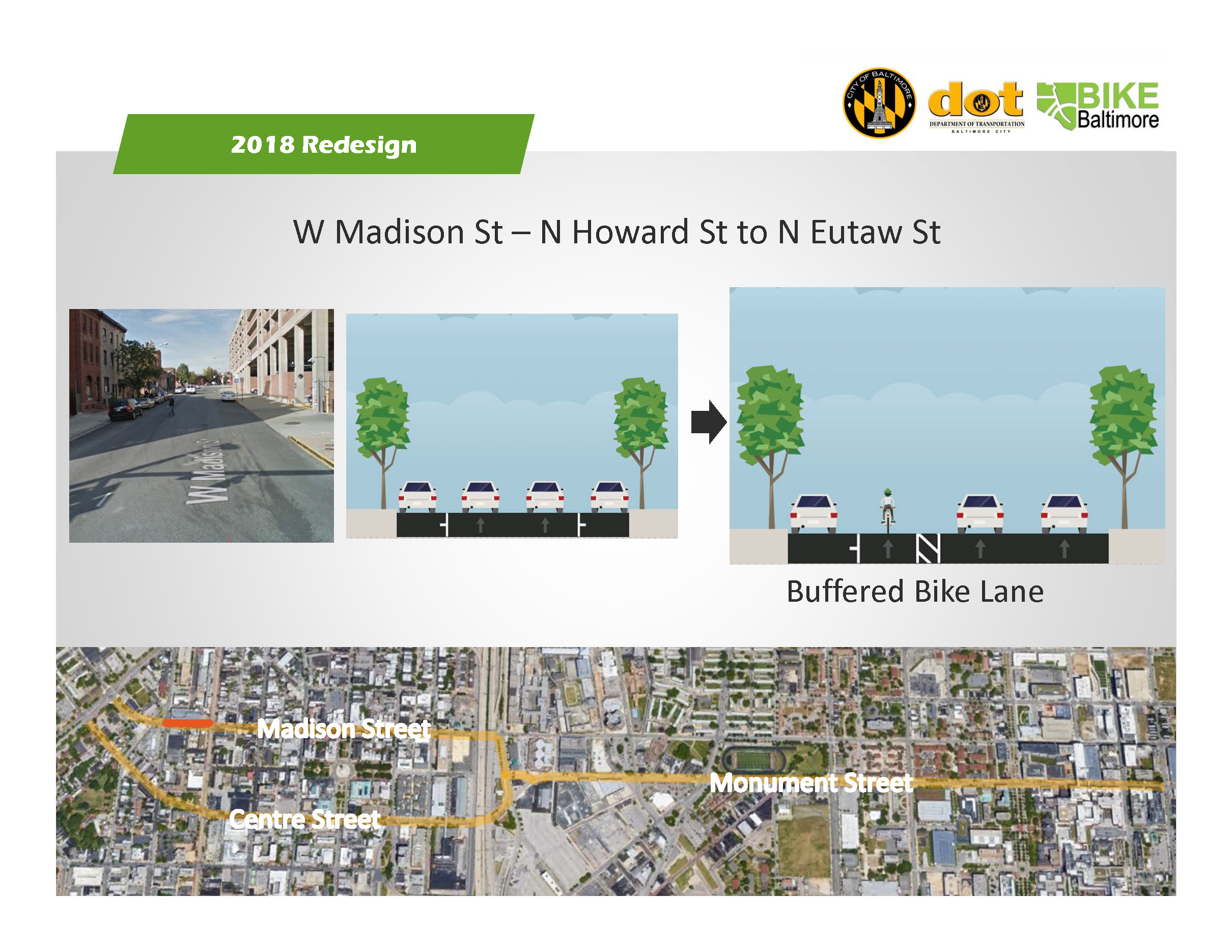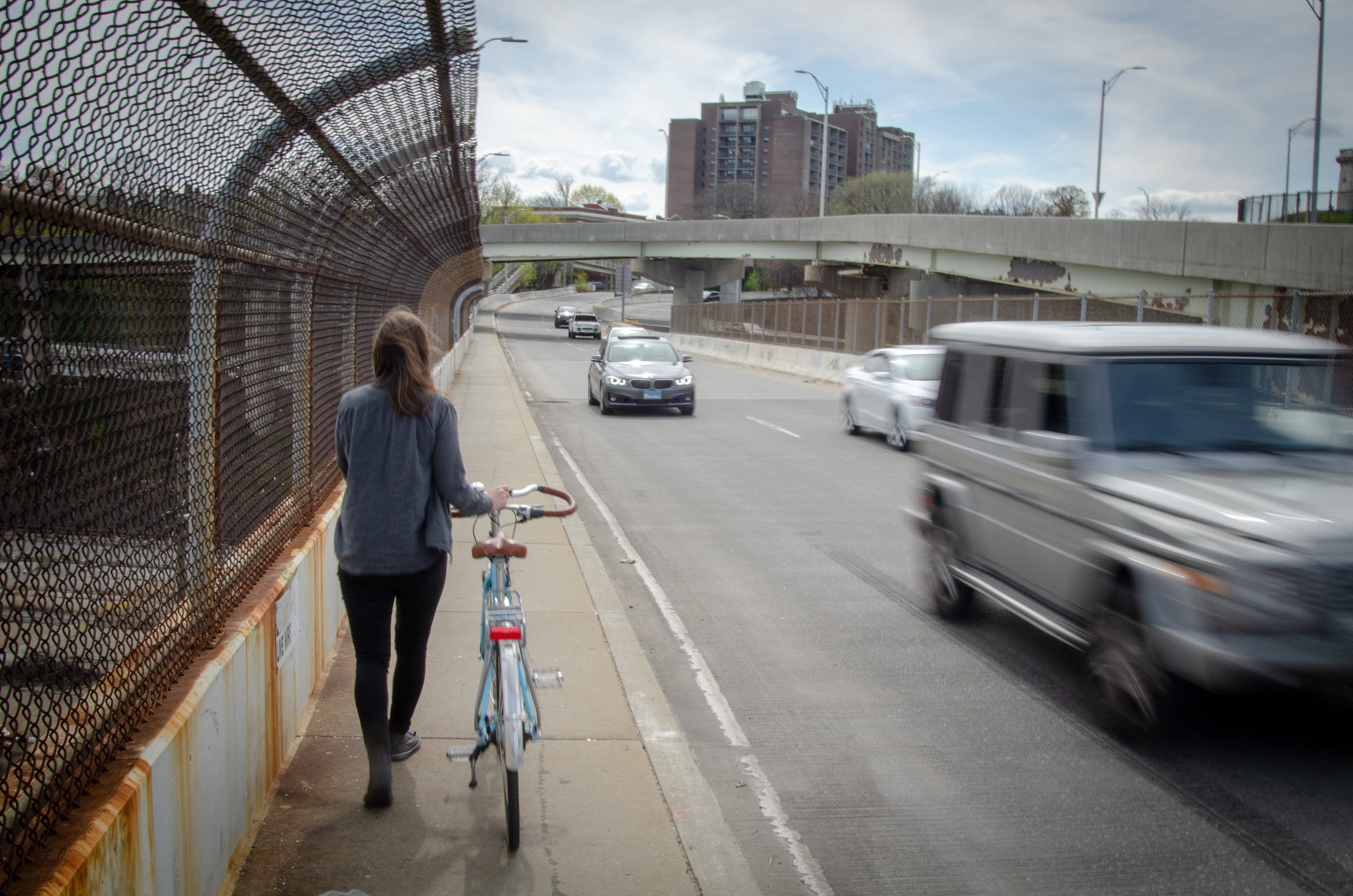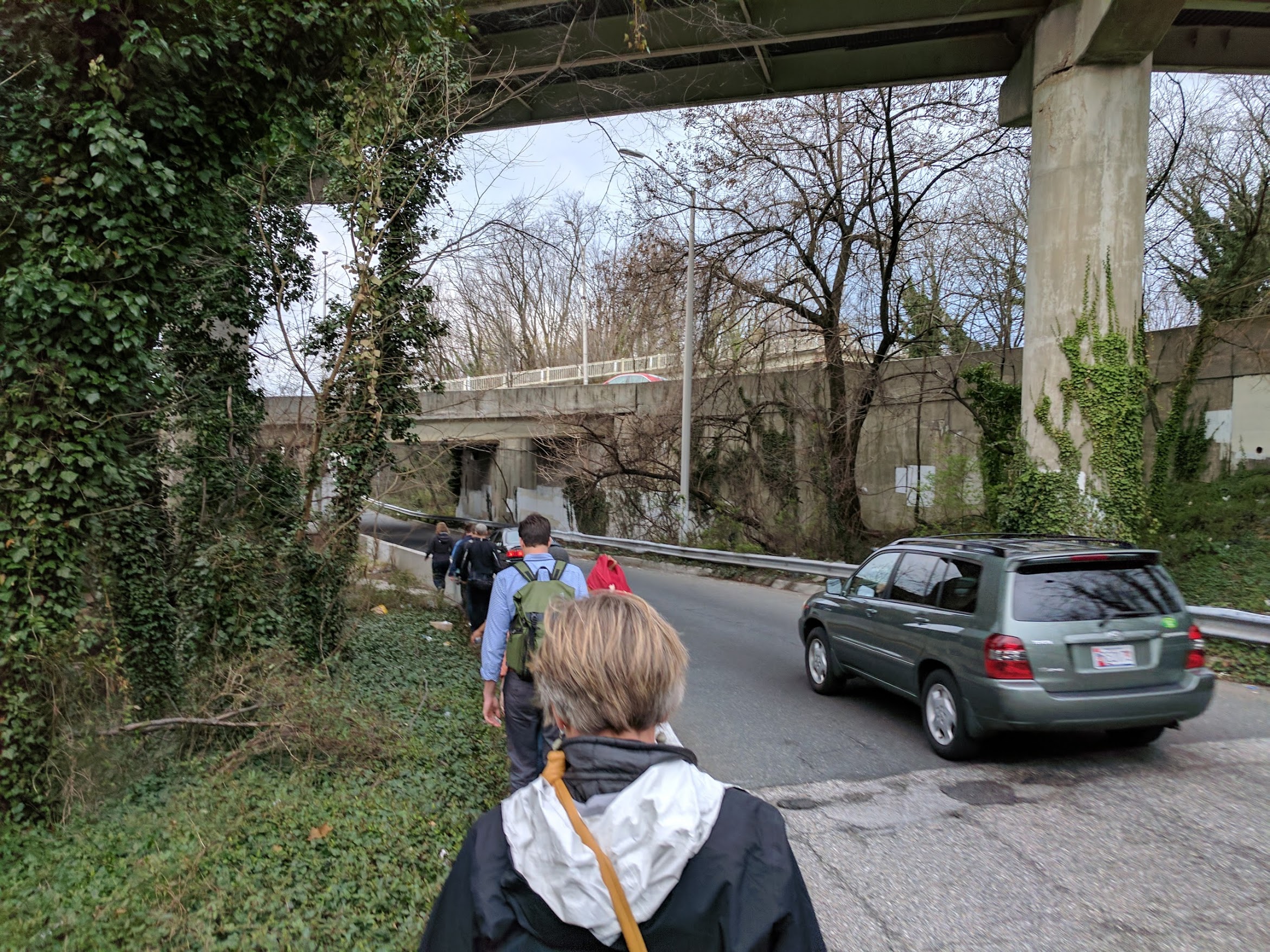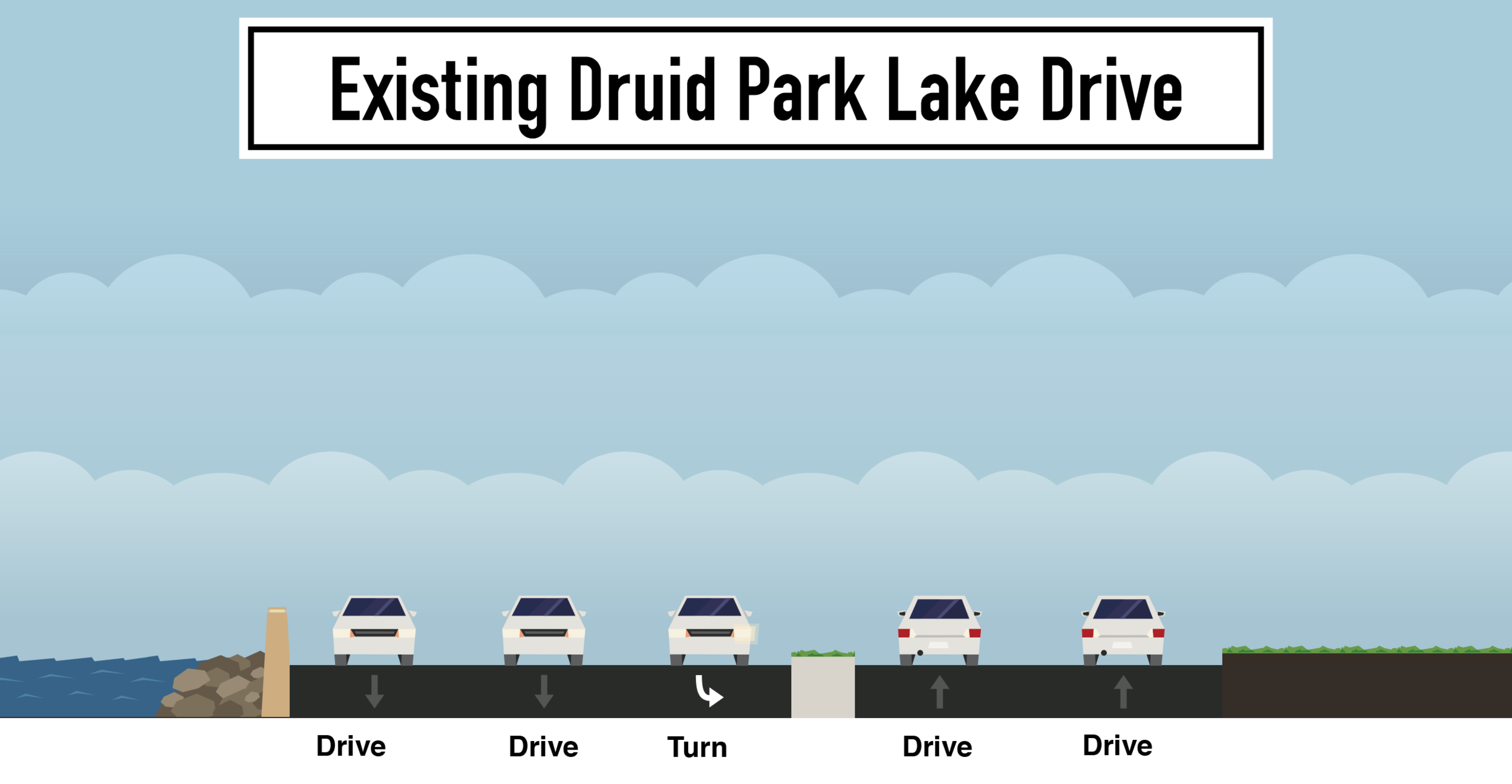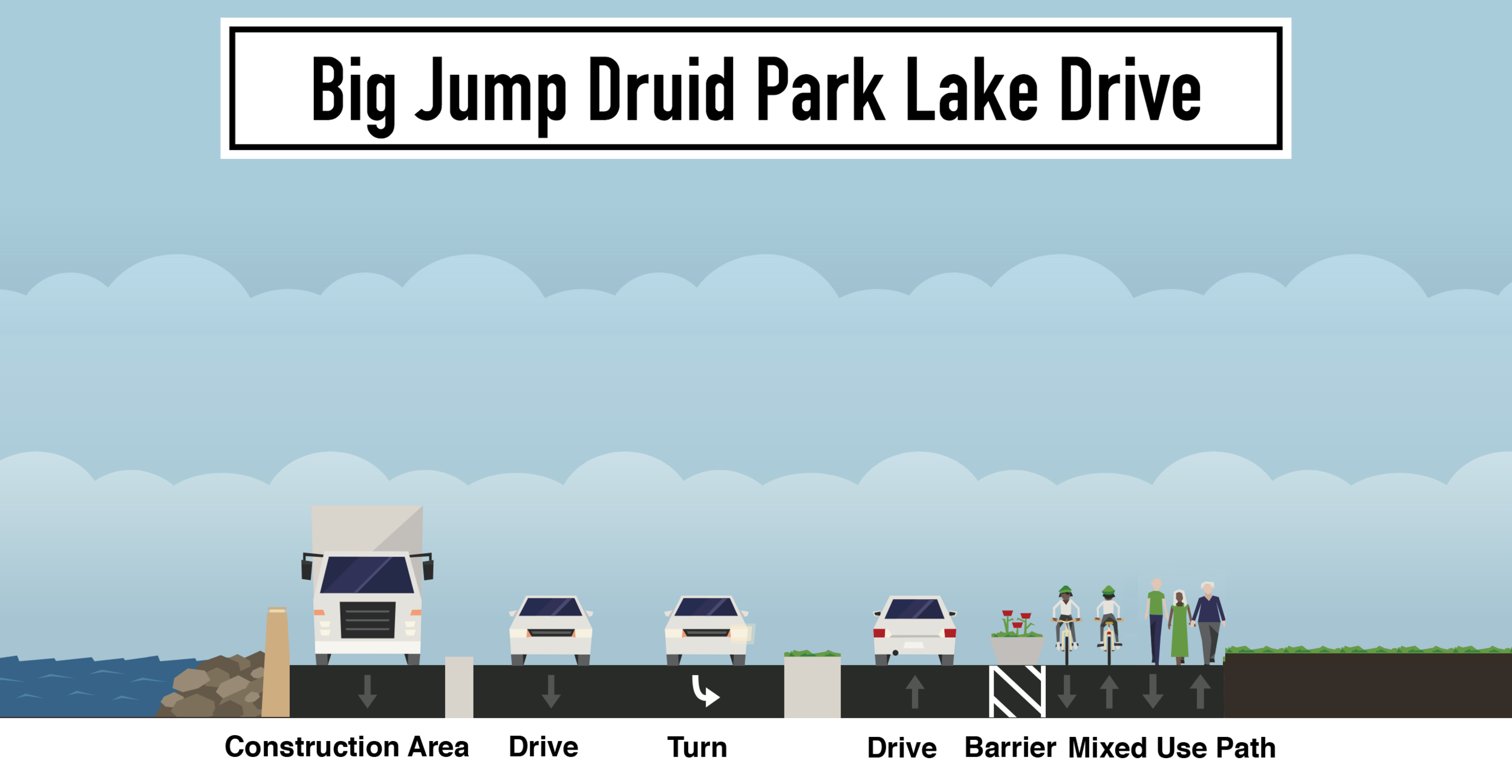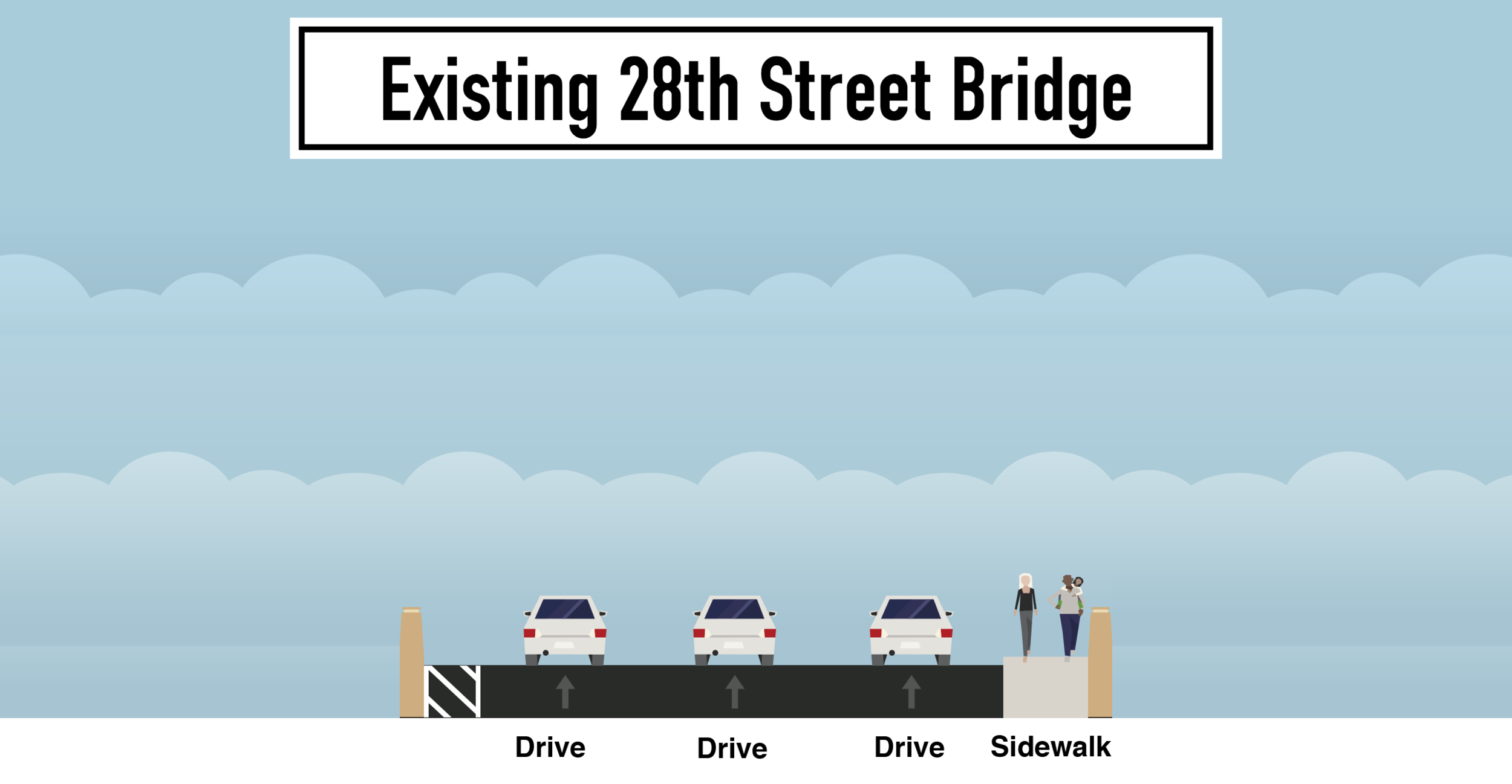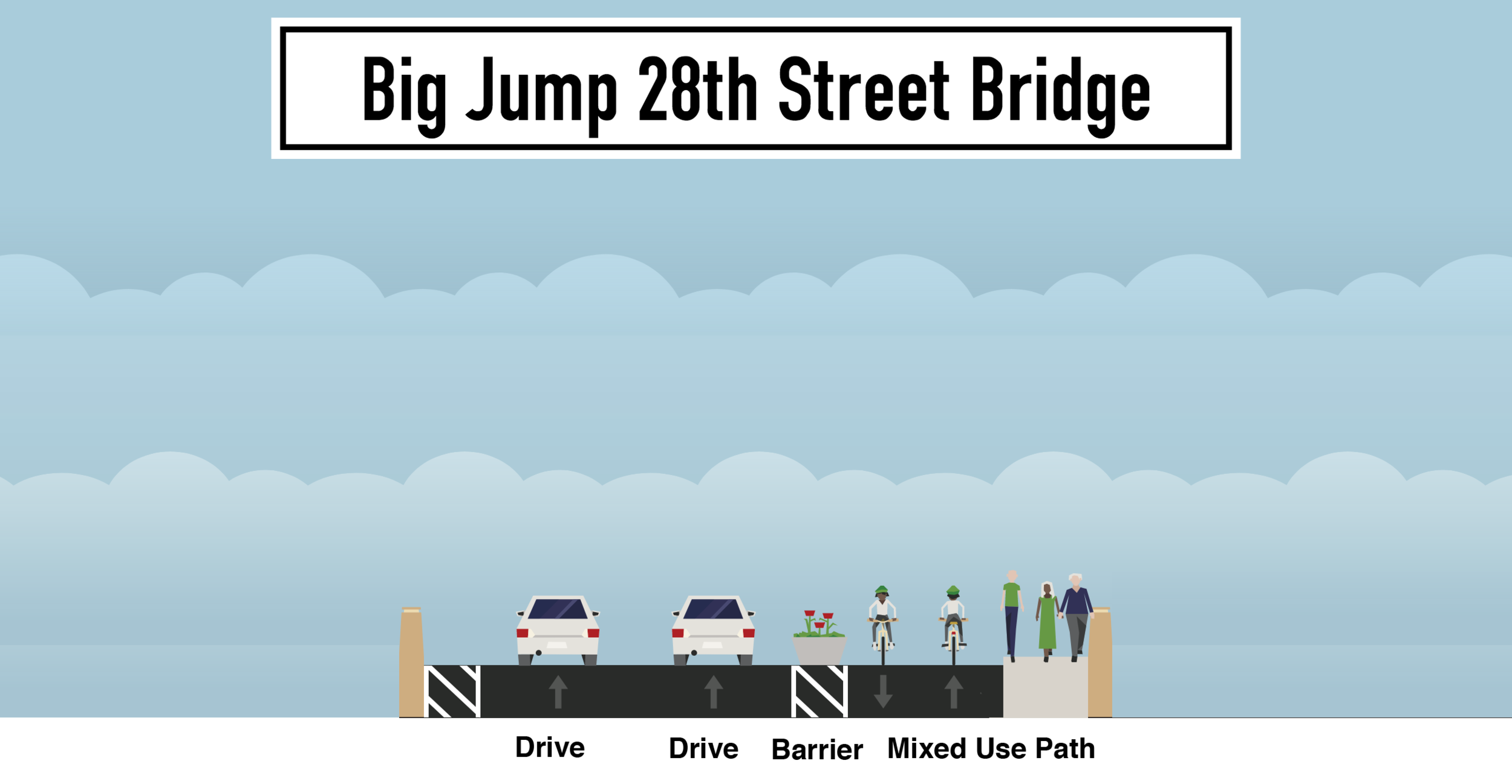UPDATE to the Update:
Last week, BCDOT presented options for revision of Roland Avenue. Their “preferred option” is a road diet that takes Roland Avenue down to one lane in each direction. This would slow traffic while allowing for a wider parking lane, reducing parking intrusion into the bike lane. This design would solve It also is by far the most cost-effective and quickest to implement solution.
While several other designs presented would maintain an all-ages bike lane, they would cost in excess of a million dollars, money that can and should be spent building infrastructure in the rest of our city where it is desperately needed.
Two designs were presented that would remove protected, all-ages lanes entirely. Removing protected infrastructure on streets where our city-adopted plans require it is a dangerous and likely illegal move that we cannot support.
You can see the presentation and the options here.
Please use the below tool to send comments in support of the preferred option, #1:
In brief
On Thursday at 6:00pm at Roland Park Elementary School, Baltimore City Department of Transportation will be hosting yet another meeting on potential design revisions for Roland Avenue. It's likely that BCDOT will present at least one design option that is incompatible with adopted city guidance and removes parking protection and the all-ages classification of Roland Avenue. Please come out and show your support for a revised design that reduces a travel lane and keeps an all-ages, curbside protected bike lane on Roland Avenue.
Background: Roland Ave needs a road diet
Cars continue to speed on Roland Avenue, causing dangerous conditions for people walking, biking, or trying to enter and exit parked cars. This is not an issue with a bike lane, it's an issue with inconsiderate, speeding drivers. Luckily, it's solvable.
From day one, we have advocated for a road diet on Roland Avenue that would reduce the street to a single travel lane, a wider parking lane, and a wider curbside protected bike lane in each direction. This design is proven to slow vehicular travel speeds, by far the number one complaint about the current design on Roland Avenue. It is also the #1 design alternative listed in Roland Park Civic League's own commissioned Alta Planning report.
Any new design for Roland Avenue must maintain an all-ages, physically separated bike facility. Baltimore City Department of Transportation's own guidance states this, as does our city-adopted Bike Master Plan and Separated Bike Network Addendum.
Slide from the original BCDOT presentation on Roland Avenue, showing that traffic volumes and speeds on Roland Avenue require a physically separated bike facility.
Some say tear it out
Some neighbors in Roland Park continue to advocate for removal of the curbside bike lane and restoration of curbside parking.
Restoration of curbside parking would create a remaining area that is visually massive, contributing further to speeding cars along Roland Avenue. The Roland Park Civic League commissioned Alta Planning Report agrees with our assessment: "The travel lane may not seem narrower...and therefore will not calm traffic to the same degree as modification #1."
Returning parking curbside would require installation of a new median-side bike lane separated only by flex posts, or striping of a standard buffered bike lane, against BCDOT guidance. Either design would remove the all-ages, parking-separated nature of the original facility, a step backward in safety for people who bike.
Tearing it out has a cost
While additional striping for a road diet that keeps the bike lane curbside is cheap, returning parking curbside would require milling and resurfacing of Roland Avenue to install a significantly different striping pattern. This would cost upwards of $500,000 of local dollars.
For comparison, the local dollar contribution for BCDOT to build the entire separated bike network plan for West Baltimore is $464,848.
11.5 miles of separated and supporting facilities in West Baltimore could be built for the cost of returning parking curbside on Roland Avenue.
Enough is enough
Baltimore City Department of Transportation has now spent years meeting with a vocal minority of Roland Park residents. The only reasonable and safe solution to their complaints happens to be the cheapest solution: striping a road diet and keeping a protected bike lane curbside.
Any more time or dollars spent on this project = time or dollars that could be spent on increasing access to opportunity to residents most in need of it.
If Baltimore City Department of Transportation dares spend $500,000 on resurfacing Roland Avenue to make the street less safe for people biking instead of investing that money into expanding bike access into West Baltimore per the city's own adopted Separated Bike Lane Network Plan, they will be exacerbating inequity and doubling down on our city's well documented history of structurally racist infrastructure spending.







